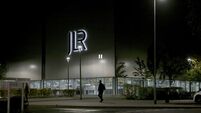Bonds send mixed signals about economic outlook

A yield curve shows the level of interest rates for various maturity ranges from overnight out to 30 years.
Normally, a yield curve slopes upwards as investors are compensated for the risks associated with investing money over longer timeframes.
The past year has seen US short-term interest rates rise towards the level of long-term rates.
This is causing some concern, because if current trends continue, short-term rates could rise above long-term yields, resulting in an inverted yield curve. The curve has inverted ahead of every US recession in the past 50 years.
We are still a bit away from this happening, though, as the current spread between two and 10-year yields is 50 basis points (bps).
However, if the US Federal Reserve delivers on its projected 75bps in rate hikes in the coming year, then the curve could well invert in 2018.
The current US economic expansion will become the longest on record if it lasts until early 2019.
Naturally, then, there is some concern that the flattening yield curve may be signalling that a downturn in the US economy could be coming.
Caution is warranted, though, as these are unusual times in monetary policy, with rates pitched at extremely low levels everywhere and ongoing quantitative easing (QE) by some central banks.
Furthermore, the moves in US yields over the past year look somewhat odd.
Two-year treasury yields have risen by some 60bps, which is reasonable enough with the Fed hiking rates by 75bps in 2017.
However, 10-year yields have fallen by 20bps, with 30-year yields down by 50bps over the same period.
Such declines in long-term rates are unusual in the early stages of a monetary tightening cycle.
However, other factors may be dragging yields down at the long end of the market.
We would point to the surprise fall in core US inflation to 1.4% this year, ongoing high levels of QE globally, which is dampening yields, and the fact that US yields are relatively high compared to other countries — and making the bonds very attractive to investors.
A downturn in the US economy in 2018 seems most unlikely, given the current momentum in activity there, improving global growth, interest rates remaining very low and fiscal policy likely to be loosened via tax cuts next year.
Indeed, the Fed only last week upgraded its forecasts for the US.
It sees the economy growing by 2.5% next year and around 2% in 2019 and 2020, with the unemployment rate dropping below 4%.
The Fed can be expected to continue raising rates in these circumstances.
It foresees rates rising to above 3% by 2020 from 1.375% at present.
The market is not as convinced, and see rates rising to just above 2% in 2020. It believes that continuing low inflation will prevent the Fed raising rates much beyond this level.
One would expect 10-year US yields to stay around their current level of 2.4% in such circumstances, with 30-year yields remaining near 2.7%.
Crucially, then, the long end of the US bond market would appear to be very dependent on a continuing very benign inflation backdrop to sustain current yields levels.
Hence, investors would be well advised to pay particularly close attention to wage growth and core inflation measures next year.
Any pick-up in these indicators would cause interest rates to rise sharply right along the curve, and not just at the short end as happened this year.
















